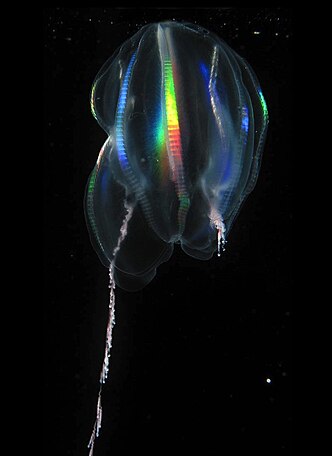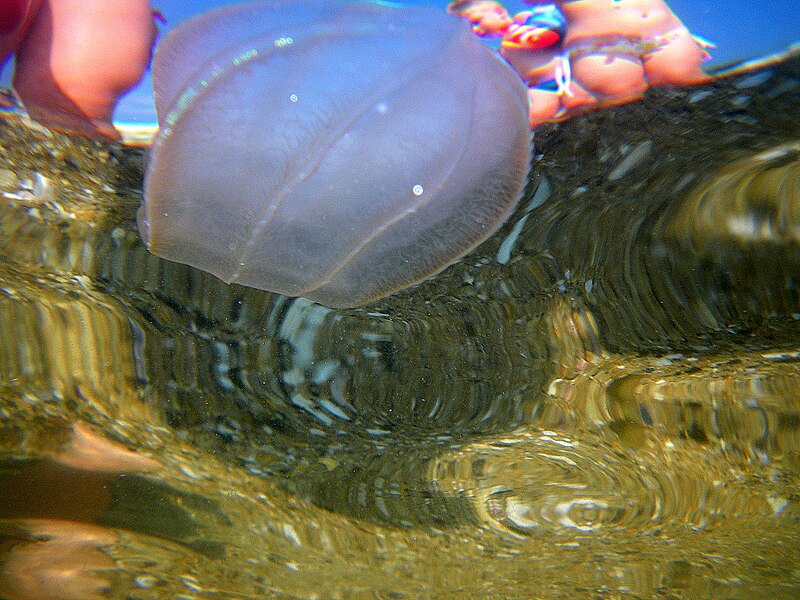The video speaks for itself: UFOs are officially underwater. The blinking lights look more fit for a spaceship than a living thing. Yet, we swear to whatever god exists, the video above is footage of a living creature.

Comb jellies are not even tangentially related to true jellyfish. They have their own phylum, Ctenophora, making this entry one of the biggest 'blanket entries' on this blog. The phylum is somewhere between sponges and cnidarians. They are quite abundant, spanning all marine environments at virtually all depths. That includes the deep, where they are particularly common.
Comb jellies (and their phylum) derive their name from the rows of cilia along their bodies. They are the largest animals that move via cilia (see also: Paramecium). Most modern comb jellies have 8 rows of cilia, allowing them to move like oversized protozoans while sparkling. They do not technically glow in the dark...but you could've fooled us, nature.
 |
| Hey, it gets the ladies. |
All comb jellies are predatory. They will eat roughly anything that fits in their pitcher plant-ish mouth. That includes fish larvae, jellies, other comb jellies, and the ever-popular copepods. The hunting technique varies with the species: some lie in wait, others chase, and still others use tentacles like spider webs. That said, they wreck ecosystems when they are accidentally introduced; the Black Sea got hit with a North Atlantic comb jelly that will likely get its own entry.
Comb jellies one of the oldest animal groups known to man. They have been around since at least the Devonian according to a remarkable fossil record. Some ctenophores were found in the Burgess Shale, which sported many specimens of sea life from the mid-Cambrian Period (505 m.y.a). From these preserved specimens, we know that older comb jellies had more mounted combs than their modern counterparts, and that some of them had very big mouths. There is no say on whether these comb jellies glowed like UFO's or not.

We personally hope they did.



No comments:
Post a Comment